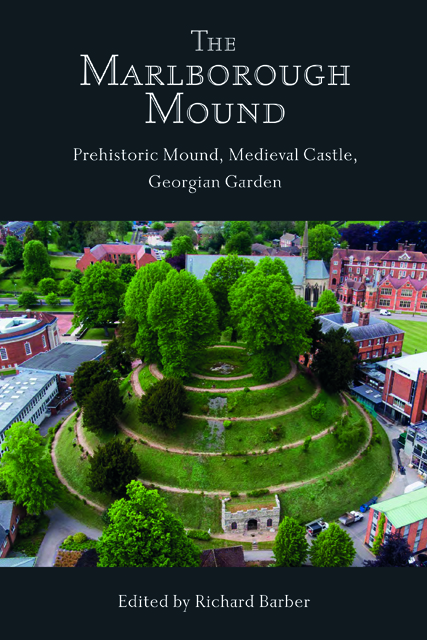Book contents
- Frontmatter
- Contents
- List of Figures
- Acknowledgements
- Preface
- 1 ‘One remarkable earthen-work’: The Neolithic Origins of the Marlborough Mound
- Afterword: The Round Mounds Project
- 2 Castles and the Landscape of Norman Wessex, c. 1066–1154
- 3 Marlborough Castle in the Middle Ages
- 4 The Mound as a Garden Feature
- Epilogue: The Marlborough Mound Trust
- A Inquisition into the State of Marlborough Castle, 11 September 1327
- B Castellum Merlebergensis, by H. C. Brentnall, F.S.A.
- C Constables of Marlborough Castle
- D Marlborough Castle: Archaeological Findings for the Medieval Period
- Bibliography
- Notes
- Contributors
- Index
1 - ‘One remarkable earthen-work’: The Neolithic Origins of the Marlborough Mound
Published online by Cambridge University Press: 11 January 2023
- Frontmatter
- Contents
- List of Figures
- Acknowledgements
- Preface
- 1 ‘One remarkable earthen-work’: The Neolithic Origins of the Marlborough Mound
- Afterword: The Round Mounds Project
- 2 Castles and the Landscape of Norman Wessex, c. 1066–1154
- 3 Marlborough Castle in the Middle Ages
- 4 The Mound as a Garden Feature
- Epilogue: The Marlborough Mound Trust
- A Inquisition into the State of Marlborough Castle, 11 September 1327
- B Castellum Merlebergensis, by H. C. Brentnall, F.S.A.
- C Constables of Marlborough Castle
- D Marlborough Castle: Archaeological Findings for the Medieval Period
- Bibliography
- Notes
- Contributors
- Index
Summary
One remarkable earthen-work however, must not be passed over in silence. I allude to the mount within the gardens of the Castle Inn, a huge pile of earth, and inferior in proportion only to Silbury Hill near Abury. Each are situated on the river Kennet; the one near its source, the other near its margin; and I have no doubt but that in ancient times each had some corresponding connection with the other.
These words were written by the well-known antiquarian Richard ‘Colt’ Hoare in 1821. Hoare is unlikely to be the first to comment on the similarity between the Marlborough Mound and the nearby mound of Silbury Hill, but he seems to have been the first to record his comments. Silbury Hill, an enormous 31m-high mound lying a little more than 8km further upstream of the River Kennet, was known to be pre-Roman in date since the antiquarian William Stukeley commented on it in the eighteenth century. Although only a little over half its height, the Marlborough Mound is certainly of similar form to Silbury Hill, and in a comparable topographic location, being next to the River Kennet, at a confluence (with the now canalized brook that formerly rose in Barton Dene to the north), and with springs at its base. Hoare’s suggestion of a ‘corresponding connection’ between the Marlborough Mound and its prehistoric neighbour meant that it subsequently entered the literature as an enigma, with some authors feeling that there is no hard evidence that the mound is of that date, while others have been more accepting.
An enigmatic mound
Brentnall, a schoolmaster at Marlborough College, outlined the history and archaeological evidence for Marlborough Castle and fuelled the case for prehistoric origins on discovery of some antlers found embedded in chalk on the slopes of the mound. These were recovered during work for a boiler-house chimney that included cutting a channel for the flue up the north-western side of the mound in 1912. The antlers, which were recovered halfway up and several feet into the mound, comprised six fragments from red deer lying together: ‘three of these fragments consist of the burr and broken brow-tine, and two others seem to be consecutive portions of the beam of the antler to which one of the brow tines belonged.
- Type
- Chapter
- Information
- The Marlborough MoundPrehistoric Mound, Medieval Castle, Georgian Garden, pp. 1 - 18Publisher: Boydell & BrewerPrint publication year: 2022



